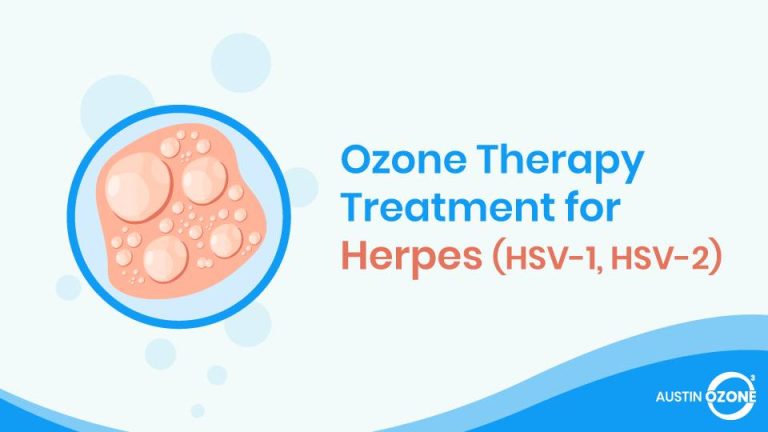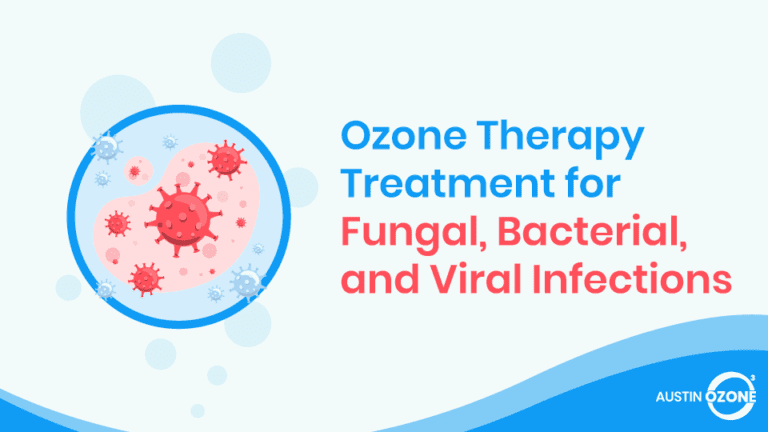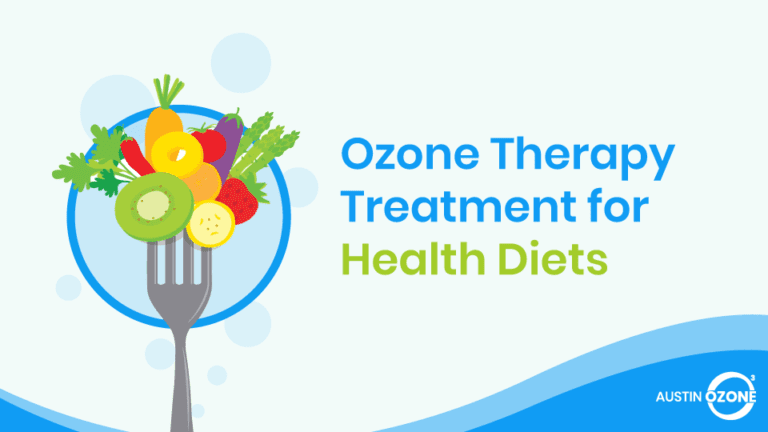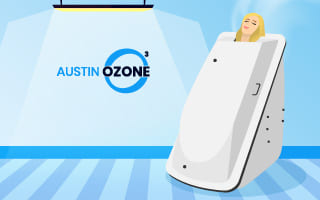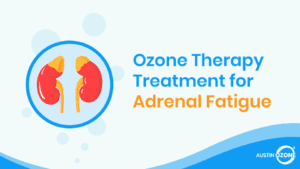Genital herpes is one of the most common sexually transmitted diseases in the U.S. According to the Centers for Disease Control and Prevention (CDC), approximately 776,000 people3 develop new genital herpes infections nationwide, while the World Health Organization (WHO) estimates that around 4 billion people7 are infected worldwide.
The infection is usually caused by the herpes simplex virus type 2 (HSV-2), but can sometimes be caused by type 1 (HSV-1), which more commonly affects the mouth and lips.
What Is an HSV Infection?
An HSV infection happens in three stages2. First, the virus enters the body through direct contact with the mucous membrane or through a small opening on the skin. Second, the virus travels along the nerves and reproduces before it becomes dormant within the cells. Third, the virus becomes activated during times of stress and appears as blister-like sores around the mouth, nose, buttocks, and genitals.
HSV-1, also known as cold sores, is usually acquired from touching, kissing, or using common eating utensils and towels. On the other hand, HSV-2 is usually passed through sexual contact.
HSV-1, also known as cold sores, is usually acquired from touching, kissing, or using common eating utensils and towels. On the other hand, HSV-2 is usually passed through sexual contact.
According to statistics, HSV-2 is more prevalent among women than men. The scariest part is that about 87.4 percent of those with HSV-2 infections have never been clinically diagnosed, and may not even realize they are infected, thus they may not take the necessary precautionary measures to prevent spreading the infection to others.
One can reduce their chances of getting an HSV infection by practicing safe sex (i.e., using condoms during sex) and avoiding any skin-to-skin contact with open sores.
Who Is Likely to Get Infected With HSV-2?
HSV-2 commonly affects women more than men. Those who are likely to get infected also have multiple sexual partners, had sex for the first time at a young age, was previously infected with a sexually transmitted infection, or have a weakened immune system due to a disease.
What Are the Symptoms of an HSV-2 Infection?
Generally, HSV-2 has no symptoms, which is why so many people go undiagnosed. However, when they do occur, they are characterized by open sores or genital blisters. In addition, the patient might experience swollen lymph nodes, fever, body aches, and tingling or shooting pain in the legs, hips, and buttocks.
Sometimes, HSV-2 can spread to the eyes. When this happens, the person infected can experience light sensitivity, pain, and a gritty feeling in the eye. Without proper treatment, the eye infection can lead to scarring and can further evolve into the loss of vision.
HSV-2 is a lifelong infection; therefore, recurrent symptoms are common. When this happens, it can lead to physical and psychological distress.
Is HSV-2 Contagious?
HSV-2 can spread through direct skin-to-skin contact. This means that you can get HSV-2 on one part of your body but have another area free of it. However, HSV-2 can be passed to other parts of the body, so it is highly advisable to never touch the sores. It is also recommended that the person infected frequently wash their hands to prevent further contamination.
Aside from direct skin contact, HSV-2 can also be passed by a mother to her child during childbirth.
What Can Trigger HSV-2 Symptoms?
Although HSV-2 usually does not show any symptoms, they can be triggered especially when the immune system is compromised. They can also be triggered by the smallest thing like using artificial sweeteners in your food or drink, drinking caffeinated beverages like coffee or tea, exposure to strong sunshine or cold wind, and poor diet.
The symptoms can also be triggered by metabolic and hormonal imbalances, nutritional deficiencies, and chronic inflammation.
What Are the Risks of Having HSV-2 Infection?
An HSV-2 infection can be harmful for immunocompromised individuals, especially for people with HIV. It is said that HSV-2 increases the risk of becoming infected with HIV. Moreover, people with both HSV-2 and HIV infection are more likely to spread it to others.
Other complications include esophagitis, hepatitis, pneumonitis, and meningoencephalitis.
How Is HSV-2 Infection Treated?
Antivirals are considered the most effective medication for managing HSV-2, although they cannot cure the infection. The goal of taking medications is to prevent any complications, particularly acquiring HIV. However, you need to realize that taking medicines can lead to various side effects.
Ozone therapy is particularly useful in decreasing pain and reducing the probability of recurring symptoms. Ozone is known for its antibacterial and antiviral effects, which is why some experts are studying its efficacy in treating herpes.
Schedule an Ozone Therapy Session Today!
What Is Ozone Therapy?
Ozone therapy is classified as a therapeutic treatment and helps prevent a wide range of medical conditions. Ozone is a gas composed of three oxygen atoms that are chemically bonded together.
Because of the extra oxygen, ozone can react with the free radicals found in the body to neutralize it. This reaction helps prevent and treat the diseases caused by bacteria and viruses.
Ozone has a strong oxidizing action and can spontaneously decompose into oxygen. This chemical reaction causes a strong bactericidal effect, that is, it inactivates bacteria and viruses by disrupting their cell envelope through the oxidation of the phospholipids.
The bactericidal and antiviral effects of ozone therapy are being studied extensively.
How Does Ozone Therapy Work?
Ozone therapy requires an ozone generator that splits an oxygen molecule into half and combines it with another oxygen molecule to make ozone. The oxygen molecule is usually supplied by a tank, which is hooked up to the generator.
The therapy is often administered through Major Autohemotherapy (MAH), which involves taking out a blood sample from the patient and injecting it with medical grade ozone. The ozone and blood are allowed to mix together before the ozonated blood is intravenously infused back to the body. This process can destroy pathogens in the blood.
Research shows that ozone is effective in reducing pain and the swelling of the tissue, as well as in normalizing hormone and enzyme production.
MAH stimulates the production of white blood cells, which helps the body fight infections. The process also degrades the toxins you get from eating processed or unhealthy food. MAH dissolves and eliminates the toxins, turning them into waste.
Ozone therapy can also be administered through insufflation (pumping ozone through body crevices like the ears, anus, or vagina) or through the use of ozonated olive oil for topical applications. Sessions usually last from 30 to 40 minutes per treatment.
What Are the Common Health Benefits of Ozone Therapy?
Ozone is said to be effective in killing all types of parasites, fungi, yeast, bacteria, and viruses. Aside from its antibacterial and antiviral effects, it can also help stimulate the immune system and speed up the body’s healing process. In addition, ozone can improve blood circulation through oxygenation.
Research also shows that ozone is effective in reducing pain and the swelling of the tissue, as well as in normalizing hormone and enzyme production.
Is Ozone Therapy Safe and Effective?
So far, there are no known risks or side effects in using ozone therapy as long as the necessary precautions are followed. For example, MAH is a medical procedure that must be administered by certified medical professionals. Insufflation, on the other hand, must be done in a room with proper ventilation, as inhaling ozone can be detrimental to one’s health.
Ozone Therapy for Herpes Simplex 2
Although ozone has been extensively studied for its antibacterial and antiviral benefits, it is also considered a controversial method because ozone is known as a pollutant, thus, toxic to humans if inhaled. Still, clinical studies show that ozone therapy can be a multi-factor and poly-system treatment method with no side effects.
A study1 made by the Ministry of Health in the Republic of Azerbaijan revealed that 76 percent of ozone therapy patients showed less recurrence of symptoms. During laboratory analysis, the results also showed a significant reduction of virus levels in the blood. This is vital since most medicines can only suppress the symptoms but do not really prevent virus reproduction within the nervous system.
Another study conducted in Italy5, showed that patients who underwent ozone therapy showed remarkable reduction in itching and in the swelling of blisters and sore spots.
Summary
Although HSV-2 infection is incurable, there are still ways to alleviate the symptoms and reduce the viral load in the body. One way is through ozone therapy. Ozone therapy has shown incredible and positive results in preventing the symptoms of HSV-2 infection from recurring. The treatment is painless, effective, and overall safe.
If you become infected with HSV-2, you should consider getting ozone therapy. Regardless of the administration method used, ozone delivers the same health benefits. While there are other alternative treatments available, ozone therapy has clinical evidence to support its efficacy.
Schedule an Appointment Today
References
- Ali, A.-B. A. H. (2018). Frequency of Viral Infection in Congenital Neonates in Khartoum State (Master’s thesis, University of Shendi). Retrieved from http://repository.ush.sd:8080/jspui/handle/123456789/578
- Center for Occupational Environmental Medicine. (2017, February 8). HERPES SIMPLEX VIRUS. Retrieved from https://coem.com/blog/herpes-simplex-virus-3/
- Centers for Disease Control and Prevention. (2017, January 31). Genital herpes. Retrieved from https://www.cdc.gov/std/herpes/stdfact-herpes-detailed.htm
- Guliyeva M. G. (2018). The effectiveness of ozone therapy used in the prevention of relapse in patients with ophthalmic herpes. Russian Ophthalmological Journal, 10(2), 23-27. (In Russ.) https://doi.org/10.21516/2072-0076-2017-10-2-23-27
- Manfredi, G. & Apuzzo, D. (2020). Successful ozone treatment of EBV and HSV-Related. Frontiers in Medical Case Reports, 1(2), 1-6.
- Project Avalon. (2013, September 22). A thread for autism research paper links. Retrieved from http://projectavalon.net/forum4/archive/index.php/t-63627.html?s=f4f5a290b975511262451bbb0f118621
- World Health Organization. (2020, May 1). Herpes simplex virus. Retrieved from https://www.who.int/news-room/fact-sheets/detail/herpes-simplex-virus


